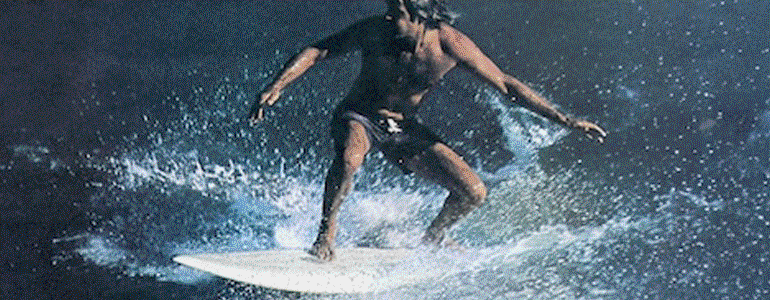Part 5: The Shortboard Revolution Terry Fitzgerald's quiver of psychadelic sticks California Heritage Museum In the history of surfing innovation the Shortboard revolution was a critical period in terms of surfing innovation. In three years, from 1967 to 1970, the average 12-kilogram board dropped to 6; 5-kilogram boards.

This short timeframe was crucial to where surfing is today and it has been credited to two forward thinking innovators, American George Greenough and Aussie Bob McTavish. In 1965, when the Santa Barbara kneeboarder Greenough visited the shaper McTavish on the North Coast of NSW, McTavish was impressed by Greenough’s flexible, lightweight kneeboards ability to stay tucked into the lip of the wave, whilst performing sharp turns.
Early Bob McTavish shapes. At this time, the longboards were certainly performing some exciting turns, but the noseriding manouvre was the pedigree of surfing skill. McTavish sought out to change this all, aiming to allow the surfer to be able to draw out the same lines that a kneeboarder could.

So from the brainchild of Greenough and McTavish, a 1966 shortboard was crafted with the ability to change it all. Aussie surfer Nat Young won the World Championships riding the shortboard which, although in todays standards would be classed as a progressive longboard, epitomised the changing tide in surfboard shapes. Nat Young's Sam' board Alongside McTavish popularization of the shortboard, and subsequent criticism from surfing traditionalists who claimed surfboards should be long and cruisy, Dick Brewer pocket rocket was crafted.
True to it ‘s name, the pocket rocket shortboard allowed the surfer to ride the pocket of the wave a step further than the Hawaiian board. The board was faster, more maneuverable, and super light, in comparison to its longboard counterparts. Brewer riding the 'pocket rocket' shape.

Two fins or twin fins made an appearance at this time, allowing the surfer to control their board easier with better turn response and stability. As the shortboard revolutionwas in it prime, surfing innovators were attempting to craft radical new ways to improve and develop this new form of surfing. Noses were shaped, tails were shaved and fins became more flexible. Emerging from this era, came the pintail a more pointed, sharp tail shape allowing the board to hold form in bigger surf Vintage pin tail Col Smith Morning Star shape.
Check out our wide variety of shortboards or customise your own!
Read our next installment of the History Of Surfing Innovation – Part 6: Surfing Hits The Mainstream

